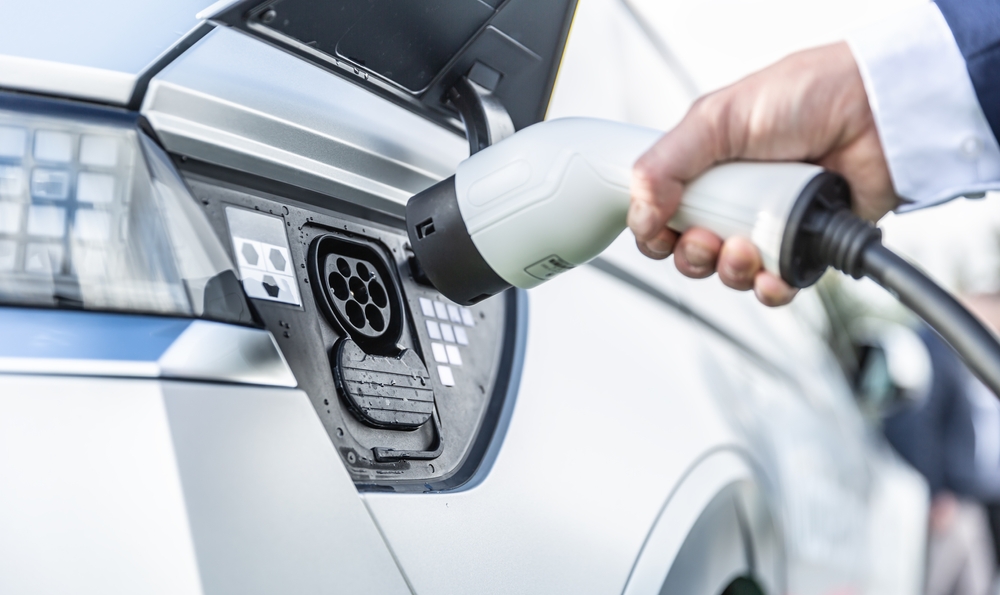Freezing winter temperatures slow the chemical reactions in EV batteries, reducing the charge they can hold — and a vehicle’s range. The good news is: It’s temporary.
On a frigid night in December 2022, Hans Guo was on his way home when his Tesla came to a complete stop. The dashboard showed another 18 miles (30 kilometers) of range, but there’s no arguing with a car that won’t turn on; stranded, Guo called for a tow.
Just as speed, terrain and tire pressure affect the range of electric cars, outdoor temperature does, too. Both heat waves and cold spells can wreak havoc on EVs’ lithium-ion batteries, speeding up (or slowing down) the chemical reactions that affect their charging capacity. But while extreme heat can break a battery down over time, range loss from the cold is only temporary. And there’s no long-term damage to the EV battery itself… however much running out of juice may traumatize the driver.
“I no longer take any chances,” says Guo, 50. When freezing temperatures come to Canada’s Niagara Falls, where he lives, Guo makes a point of visiting a charger as soon as his remaining range dips below 45 miles (72 kilometers).
Why EVs lose range in cold weather
Lithium-ion batteries’ susceptibility to the cold comes down to chemistry, says Sumit Chauhan, co-founder of CerebrumX, a Michigan-based automotive intelligence firm. “As the temperatures drop, the capacity of the battery — both in terms of getting charged as well as retaining charge — is depleted,” he says.
In a way, EV batteries are like human bodies: They function best at certain climates. When temperatures climb above the ideal range, the ions in a car battery speed up, which makes it harder for them to attach to the anode or cathode. When temperatures are too low, it slows the chemical reactions and reduces the amount of charge a battery holds. In both scenarios, the car’s software will also slow down its charging speed to avoid stressing the battery.
Driving in extreme cold poses a “double hit on the effectiveness of the battery,” says Greg Brannon, a director at the nonprofit American Automobile Association. That’s because EVs use electricity from their batteries to power interior climate control, unlike internal-combustion cars that rely on recycled excess heat from their engines. (Carmakers like Polestar and Tesla, however, are equipping newer EV models with efficient heat pumps).
How much range EVs lose in cold weather
Temperature’s impact on EV range boils down to: The colder it is, the more a car’s range will suffer. From there, the specifics vary, and different EVs react to the same temperature differently. In a report published last month by Recurrent, a Seattle-based firm that surveyed more than 10,000 electric cars across 12 models, Ford’s F-150 Lightning was found to lose 26% of its normal range at 32F. The Volkswagen ID.4, meanwhile, lost 46% of its normal range.
A study of Nissan Leaf EVs in 2020 found that a fast charger could bring a Leaf to 80% charge in 30 minutes when the temperature was 77F. At 32F, the battery reached roughly 50% charge in the same amount of time.
Temperature-based range loss isn’t entirely a matter of guesswork: Most EVs will factor outside temperature into the estimated range shown on their dashboard (versus the optimal range cited when a car is on the market). But those estimates change in real time and often aren’t updated accurately until a trip is well underway. To avoid surprises, Brannon says EV drivers should look into estimated range loss for their car in their local climate, and could even conduct some back-of-the-envelope comparisons between estimated range and actual driving performance.
“Whenever cold weather comes around, those concerns need to come back,” Brannon says. “You need to ensure that you don’t find yourself in a situation where you can’t get where you need to go.”
How to preserve an EV battery in cold weather
There are several steps EV drivers can take to minimize range loss and avoid being stranded on cold days.
Charge indoors whenever possible. Even in winter, a closed garage tends to be warmer than the air outside, which means “it always helps if you park your car inside,” Chauhan says. When temperatures plummet, EV owners who use outdoor public chargers may also want to allocate a bit of extra time for topping up.
Precondition your EV. If you’ve ever run outside to start the car early so it’ll warm up before your drive, that’s “preconditioning.” Many EVs let drivers precondition via app; if the car is plugged in, that power will come from the outlet rather than the battery.
Conserve heat to conserve battery. If you’re worried about running out of range early, keeping the cabin temperature slightly below comfort levels — and focusing warming on the vents nearest you — can help stretch battery life.
Plan around charging infrastructure. While cold-weather reductions in range are unlikely to affect anyone driving short distances, it’s a more important consideration if you’re embarking on a road trip or other long-distance drive. In those cases, make sure you know where public chargers are, and avoid remote stretches when your battery is at a lower charge.
Factor in range loss when rapid-charging. Slow charging allows EVs to pack more juice into their battery, but taking the time to do it isn’t always practical mid-journey. Whenever rapid charging is the only or best option, Brannon says it’s good to assume an additional 20% range loss on top of any reductions from cold temperatures.
As EV adoption picks up, drivers will become increasingly familiar with best practices for maintaining battery life — and pitfalls to avoid. Ingrid Malmgren, policy director at the EV advocacy organization Plug In America, says technological advances have already made it easier for EV owners to manage during cold snaps.
Back in 2016, Malmgren’s Volkswagen e-golf gave her a range of 83 miles at the optimal temperature and significantly less when winter storms hit her home in Jericho, Vermont. Now she has a Tesla Model Y with a range of 330 miles that more than covers her needs even when it’s cold out. Earlier this year, Malmgren drove more than 200 miles from Vermont to Quebec City in Canada, on a day where the high temperature was just 7F.
Brannon agrees that EV owners can enjoy winter driving — if they’re prepared. “A road trip with an EV, particularly in cold temperatures, is like traveling with a dog,” he says. “You can do it. You just got to plan ahead and you’re going to be making more stops.”






